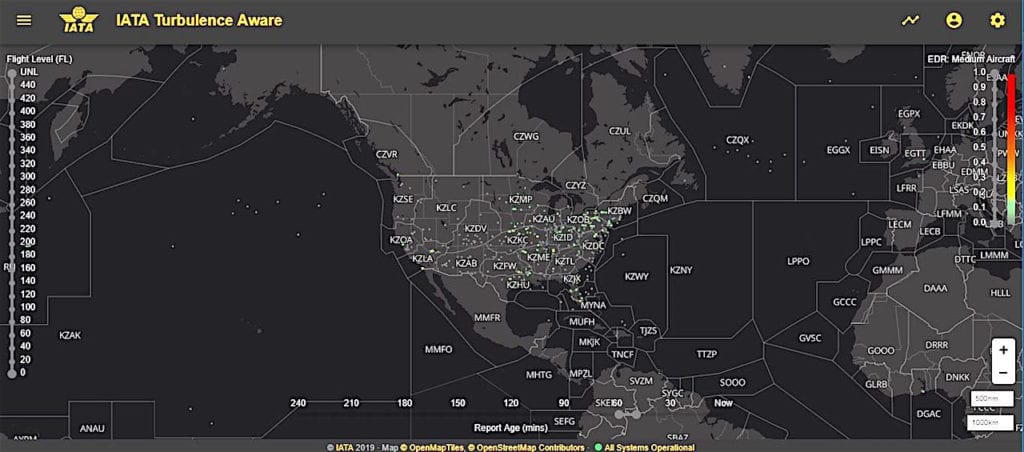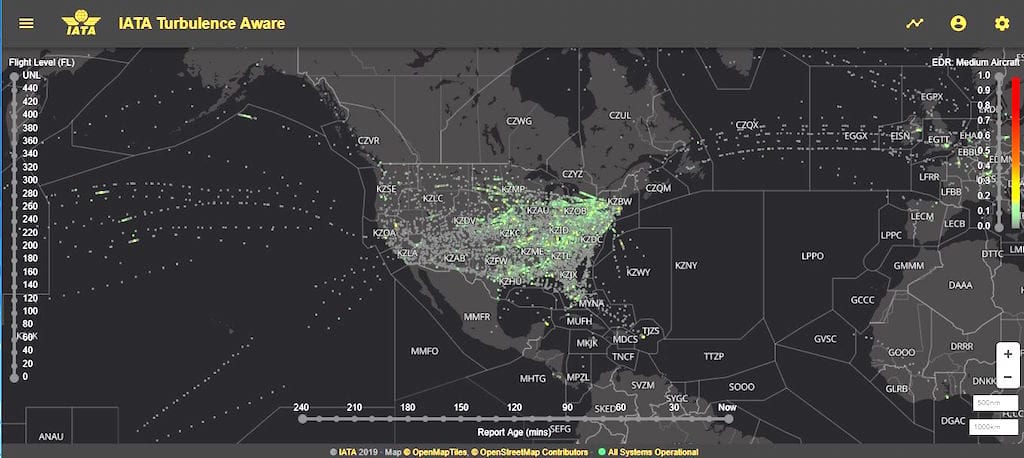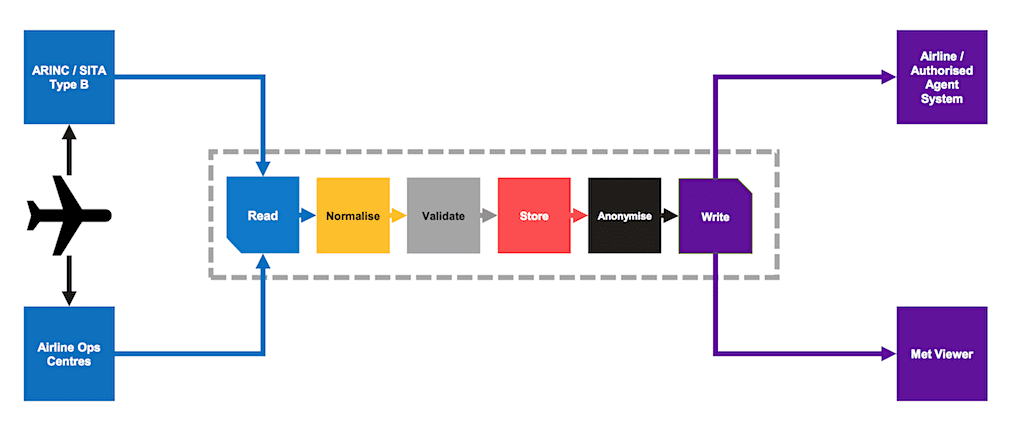
IATA's Turbulence Aware platform is currently collecting real-time turbulence information from 10 participating airlines, and will transition into being fully operational next year. Photo: IATA
The International Air Transportation Association (IATA) is a few months away from transitioning from the initial pilot phase for its Turbulence Aware platform - a cloud database collecting real time turbulence reports from participating airlines - to full operational deployment, available to airlines beginning in January.
Turbulence Aware is a tool created by IATA that uses an algorithm developed by the National Center for Atmospheric Research (NCAR) capable of collecting turbulence parameters from aircraft systems and sensors, aggregating that data and making it available in a raw format to participating airlines. IATA first started working on the system three years ago and has been using it in an operational phase throughout 2019 with 31 participating airlines, ten of which are currently feeding real-time turbulence information into it.
"It's a relatively new concept for the industry, and we want to give airlines time to see how best to use this data operationally, and discover how to build standard operating procedures around it," Katya Vashchankova, head of IATA's meteorology program, told Avionics International. "The initiative started about three years ago when airlines from some of our working groups asked us to look into developing a platform that would allow them to share real time turbulence data coming from their flights."
That capability described by Vashchankova came in the form of the algorithm developed by NCAR, capable of calculating the turbulence state of the atmospheric conditions surrounding an airborne aircraft. NCAR's development was initially funded by the FAA and provides an algorithm that can be integrated into an aircraft's domain to capture sensor data and then report on the intensity of the turbulence the aircraft is experiencing. The algorithm uses the data to calculate an estimate of the atmosphere's turbulence, or energy dissipation rate (EDR), which is the official International Civil Aviation Organization (ICAO) metric for measuring turbulence intensity.
EDR is calculated using six inputs: true airspeed, angle of attack, pitch, pitch rate, roll and vertical velocity, measured eight times per second. A detailed report about each data point, including peak EDR values, is then aggregated by a central database maintained by IATA, using Snowflake Software's Laminar Data private cloud.

Pictured here is what IATA describes the Turbulence Aware viewer would look like with more airlines participating. Photo: IATA
Each report is made anonymous in the cloud to protect the identity and privacy of participating airlines. The raw data is made available to other airlines participating in the Turbulence Aware program, to be integrated into their own individual weather and forecasting applications.
"It's an open source software that anybody can take and implement," Vashchankova said. "Those airlines that have the capability can do that in-house, they can do that at no cost. A number of airlines did it at no cost at all, some of them put it on the EFB because they had the technical components. And some others just modified their ACMS system in-house."
Some of the airlines participating include Aer Lingus, Cathay Pacific, Delta Airlines and United, among others. The data can be streamed to the ground using either an aircraft's in-flight connectivity network, or the Aircraft Communications Addressing and Reporting System (ACARS). EFB application integration is achieved for aircraft that feature aircraft interface devices, according to Brent King, head of flight operations for IATA.

A concept of operations view of IATA's Turbulence Aware platform. Photo: IATA
King said the use of EDR in NCAR's algorithms is one of the key components of the technology, as it does not vary between aircraft size or performance capabilities.
"EDR is an absolute value. So if you put an Airbus A320 in the same piece of airspace as a Boeing 777, one being a narrow body, the other a wide body, they would both measure the same EDR value because its atmospheric and not based on individual aircraft response," King told Avionics International.
IATA also developed a web-based turbulence aware viewer, that pilots can use to visualize areas of turbulence as reports become available. Another capability provided Turbulence Aware is how it lets airlines know where smoother pockets of air exist. When an aircraft using the algorithm is not experiencing turbulence, a report is sent out every 15 minutes indicating there is no turbulence within that airspace. King said IATA expects to collect up to 45 million reports about areas of turbulence and smooth pockets of air from the 10 airlines participating this year already.
The overall goal for the Turbulence Aware platform is primarily focused on helping airlines avoid or at least become more aware of airspace that features turbulence in near real time. Pilots traditionally rely on live radio reports from nearby pilots or their own data and flight plans for turbulence. But now, considering IATA represents a total of 292 airlines globally, as more carriers opt-in to the program, the organization can build a crowd-sourced picture of where turbulence exists in near real time.
"January 1 is the date we want to transition to the full operational phase," King said. "Right now we're just adding a few additional functionalities such as post flight analysis, before we transition into the full operational commercial service of Turbulence Aware."



Ingen kommentarer:
Legg inn en kommentar
Merk: Bare medlemmer av denne bloggen kan legge inn en kommentar.